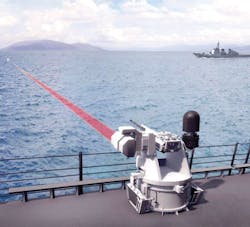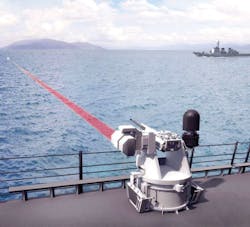Air Force chooses three companies for directed-energy weapons materials
WRIGHT-PATTERSON AFB, Ohio - Three U.S. companies are finding ways to create and use new materials for directed-energy weapons, as well as to protect U.S. and allied weapon systems and warfighters from these same kinds of weapons.
U.S. Air Force Research Laboratory (AFRL) officials at Wright-Patterson Air Force Base, Ohio, awarded contracts and task orders to General Dynamics Information Technology in Fairfax, Va.; Azimuth Corp. in Beavercreek, Ohio; and UES Inc. in Dayton, Ohio, to advance materials technologies that control and protect light and electromagnetic energy sources. The three companies will share as much as $121.1 million for materials research and survivability studies involving hardened materials and photonic materials. The three companies will work on advancing hardened materials for sensor protection; hardened structural materials; and personnel and aircrew protection. The goal is to add capabilities and increased survivability for aircrews and systems that lead to increased mission effectiveness for the warfighter.
Key areas include optical materials and processing; hardening materials and processing; electro-optic and infrared sensor protection; warfighter protection; structural protection; optical technology; studies on functional materials; threat defeat; and high-energy laser source materials. The program focuses on agile limiters research; high-performance optical coatings for visor-based aircrew protection; optical materials, ceramics, and processing technologies; and radio-frequency (RF) photonics and hybrid optical apertures.
Azimuth won a $9.6 million task order to develop new ceramic materials for laser gain media and plasmonic systems for optical components and devices. Separately, Azimuth won an $8.7 million program task order to develop new materials that protect aircrews against lasers operating in the visible and near infrared spectral regions.
UES won a $9.4 million task order to develop materials for advanced RF photonic components, plasmonic and hybrid aperture schemes, and materials for next-generation systems.
Contractors will do most of the work at AFRL facilities at Wright-Patterson Air Force Base and finish by 2020. Azimuth will do work in Camarillo and Santa Rosa, Calif.
FOR MORE INFORMATION visit AFRL online at www.wpafb.af.mil/AFRL

